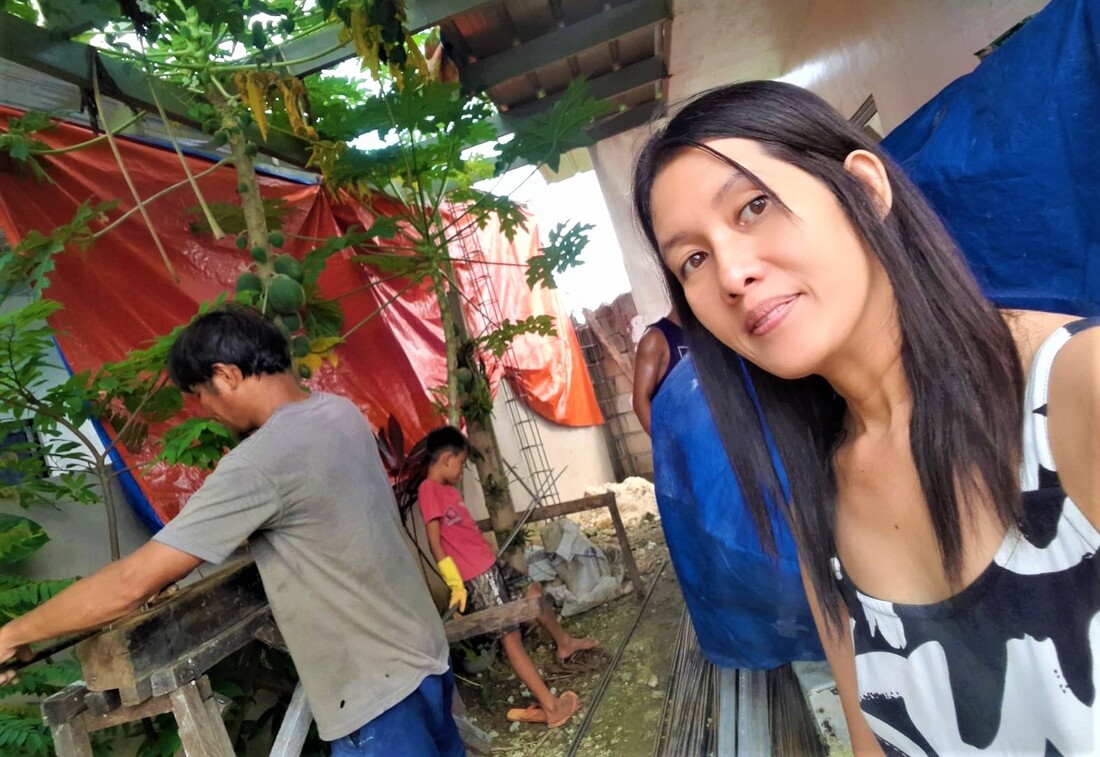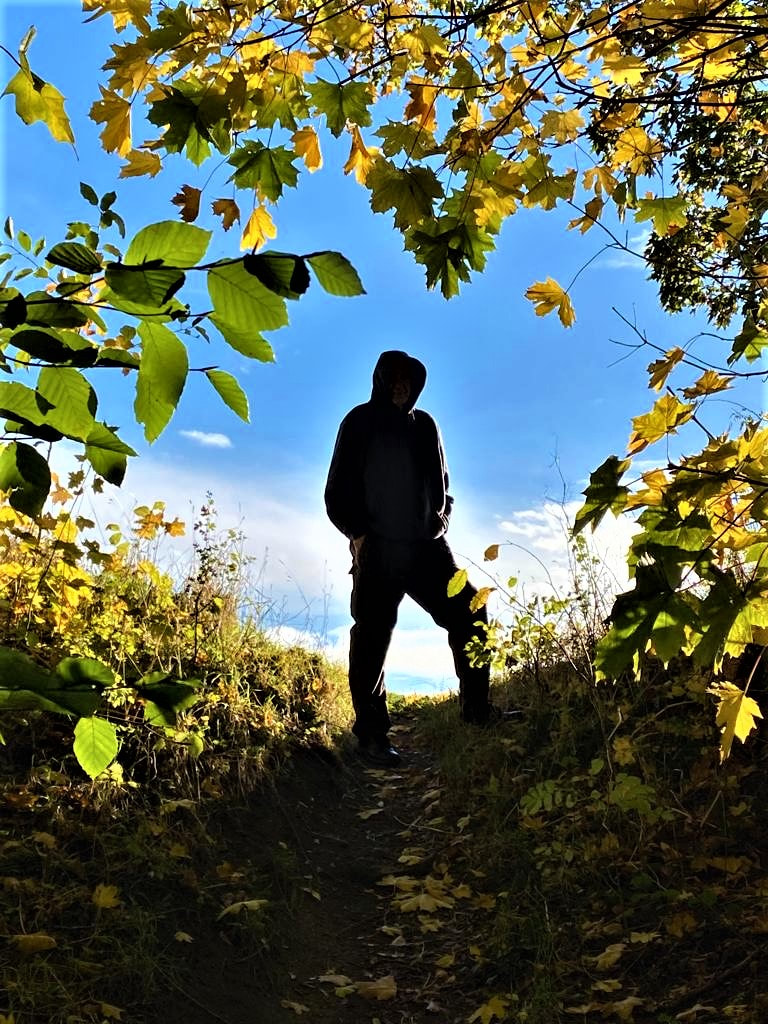|
'There is no act too small, no act too bold. The history of social change is the history of millions of actions, small and large, coming together at critical points to create a power that governments cannot suppress.' (Howard Zinn) At the heart of coaching generally lays a desire and opportunity for impact and change, a goal that may seem obvious, but one that raises important questions. As coaches aspiring to make a difference in the world, we can find ourselves navigating complex dilemmas. When we work with agents of change in, say, NGOs, charities, churches or public sector organizations, we often seek to empower individuals, teams, and organizations to be resourceful and effective in achieving transformation. One challenge we may encounter is determining the coaching agenda. A Western coaching ethic advocates for giving the client complete control over the agenda, focusing on their chosen goals and boundaries. While this approach seems straightforward, our intention of promoting social change may lead us to contemplate how much influence we should exert on the client’s journey. What if the client's solutions seem unethical, ineffective, or could pose risks to broader social development? Furthermore, when working in diverse cultural contexts, we need to be mindful of differing perspectives on individual autonomy. In some Eastern and Southern cultures, the concept of setting individual goals might not resonate the same way it does in the West. People in these cultures often prioritize the wishes and expectations of a wider group, whether family, team or community, before their own hopes and ambitions. We could risk inadvertently imposing our own cultural values onto the client. The solution often lays in recognizing the significance of context and building a strong and trusting relationship with the client. By understanding the dynamics of power, language and agendas that may emerge between us, we can gain insight into the issues at hand and potential solutions. We become allies, working together to achieve meaningful impact. A critically-reflective process allows us to adapt our coaching practice on route and to challenge our assumptions as we learn and grow.
14 Comments
‘It’s a question of what the relationship can bear.’ (Alison Bailie) You may have heard the old adage, the received wisdom that says, ‘Don’t try to run before you can walk.’ It normally refers to avoiding taking on complex tasks until we have mastered simpler ones. Yet the same principle can apply in relationships too. Think of leadership, teamworking, coaching or an action learning set; any relationship or web of relationships where an optimal balance of support and challenge is needed to achieve an important goal. Too much challenge, too early, and we can cause fracture and hurt. It takes time, patience and commitment to build understanding and trust. I like Stephen Covey’s insight that, ‘Trust grows when we take a risk and find ourselves supported.’ It’s an invitation to humility, vulnerability and courage. It sometimes calls for us to take the first step, to offer our own humanity with all our insecurities and frailties first, as a gift we hope the other party will hold tenderly. It's an invitation, too, for the receiver to respond with love. John, in the Bible, comments that, ‘Love takes away fear’. To love in the context of work isn’t something soft and sentimental as some cynics would have us believe. It’s an attitude and stance that reveals itself in tangible action. Reg Revans, founder of action learning, said, ‘Swap your difficulties, not your cleverness.’ A hidden subtext could read, ‘Respond to my fragility with love, and I will trust you.’ I joined one organisation as a new leader. On day 3, one of my team members led an all-staff event and, afterwards, she approached me anxiously for feedback. I asked firstly and warmly, with a smile, ‘What would you find most useful at this point in our relationship – affirmation or critique?’ She laughed, breathed a sigh of relief, and said, ‘To be honest, affirmation – I felt so nervous and hoped that, as my new boss, you would like how I had handled it!’ In this vein, psychologist John Bowlby emphasised the early need for and value of establishing a ‘secure base’: that is, key relationship(s) where a person feels loved and psychologically safe, and from which she or he can feel confident to explore in a spirit of curiosity, daring and freedom. It provides an existential foundation on which to build, and enables a person to invite and welcome stretching challenge without feeling defensive, threatened or bruised. How do you demonstrate love at work? What does it look like in practice? 'Now kings will rule and the poor will toil, and tear their hands as they tear the soil. But a day will come in this dawning age, when an honest man sees an honest wage.' (U2) The topic of ethics can sound and feel abstract, esoteric. Something confined to philosophy lectures. The mysterious realm of armchair academics. What does it look like in practice? Why has it become such a critical issue for organisations and societies now? Jasmin, a Filipina, is from the poorest of the poor. To her amazement, and as an answer to prayer, she finds herself with an opportunity to build a small kitchen. She looks for contractors to do the work. The first question she checks is whether the labourers are paid a fair wage. In a country and industry marred by corruption, exploitation is rife. The second is whether they will build with love, if they will pour their hearts as well as their construction skills into achieving a good result. This is so different to a purely commercial transaction. It’s about spirit, attitude – and trust. Against this backdrop, I find it helpful to think about ethics, at its simplest, as values with a moral dimension. For Jasmin, it’s about lifestyle, relationship and stance. Stance infers a choice. We are faced with a decision-point, a junction in a metaphorical road. Pragmatic wisdom would suggest a weighing up of costs against benefits. Ethics would ask who is affected and how? What would be ‘good’ and ‘right’? Why this, and why now? I look up and look around: corruption; media manipulation; climate change; environmental disaster; poverty; human rights abuse; war. How did we get here? I see the poor and vulnerable affected the most and the worst. Yet still, closer to home and within me: a temptation to put my own interests first; to close my eyes; to dull my heart; to deceive my mind; to choose the easier and expedient path. So, what does ethics look like? I ask Jasmin and her life speaks: ‘Pray, love and take a stance.’ ‘What is it your plan to do with your one wild and precious life?’ (Mary Oliver) Íñigo López de Loyola suggests a fast-forward in your imagination to the end of your life, then to ask yourself seriously from that standpoint what you will want your life story to have been. Having decided it, rewind back to the present and ensure that your vision of the future guides your priorities, decisions and actions now. This idea resonates with Stephen Covey’s 'begin with the end in mind', and Simon Sinek’s 'start with why'. According to John Kotter, if our vision is convincing enough to the mind and compelling enough to the heart, we are most likely to see it through. Without such a vision, we may drift meaninglessly. I believe the best visions are rooted deeply in ethics and values and, in essence, a fulfilment of them. I have been incredibly inspired by Jasmin’s vision, a poor follower of Jesus who lives among the poor in the Philippines: ‘Whatever status or power you have, use it for those who are vulnerable; whatever money you have, use it for the poor; whatever strength you have, use it for the weak; whatever hope you have, use it to bring hope to those who live without hope. Speak up for justice and truth – whatever the cost. Pray.’ The challenge is not just in the aspiration itself but in her sheer determination to live it out in practice. She scares me. My own vision is shaped by a trust in God too. I slip and slide on route and have sustained and caused too many scars to prove it, yet Jesus still influences profoundly the purpose, focus, boundaries and possibilities of my life and my work. As I get older, I'm experiencing a subtle and gradual shift from what I want to do in the future, to what legacy I want to leave behind me. It doesn’t feel like a mid-life crisis. Echoing Richard Rohr, it feels more like a falling upward than a falling apart. I still want to make a significant, positive and tangible difference in the lives of the poor and most vulnerable people in the world. I – you – we can be hope. What’s your vision for 2022 and beyond? How will it influence your decisions now? ‘The opportunity to make effective personal choices is highly unequal.’ (Robert A. Dahl - After the Revolution) New Years’ Resolutions. A time and practice in Western cultures when some of the more reflective or impulsive among us will commit to do something new. It could be, for instance, a new relationship, a new job, a new home, a new diet or a new fitness routine. For many people, very soon after having made a decision, the resolve will dissolve and be lost in the mists of time. Yet central to this idea of resolution is the notion of personal choice and, with it, the principle that I can succeed in achieving what I choose – if I’m willing to do whatever it takes. I often create (prayerfully) a list of key aspirations at the start of each year, then put practical steps in place so that, all things being equal, I will be able to look back at the end of that year and see that I have fulfilled them. The goals are intentionally inspiring and stretching. They are, with God’s help, within my grasp and, therefore, possible. On the whole, this discipline works by ensuring focus, parameters and accountability. It also centres on people and things that are genuinely important to me and, thereby, taps into values, motivation and determination. We can think of this choosing-acting-influencing phenomenon as exercising personal agency. Shaun Gallagher describes this as, ‘the sense that I am the one who is causing or generating an action’. ‘I can choose’ is a profound existential, psychological and political statement and stance. It means I can break out beyond the apparent default of my circumstances. We hold the potential to be catalysts of real change in the world, within ourselves as well as in broader relationships and situations – and this brings opportunity and responsibility. I can choose and you can choose. I think vividly of Jasmin in the Philippines, a poor woman among the poor who chooses to follow Jesus’ call and example, whatever the cost. Rather than allowing herself to be limited by her circumstances or by expediency, she exercises radical personal agency and transforms everyone and everything in her path. Malala Yousafzai and Greta Thunberg are famous examples of women too who take personal choice, action and influence seriously – and, similarly, at considerable personal risk. There are wider dimensions. A person's sense and scope of agency are affected by structural factors that transcend the individual, e.g. social status; wealth; education; gender; ethnicity; culture. Mustafa Emirbayer and Ann Mische observed that a person’s lived experience limits what possible alternatives or future scenarios he or she is able to imagine. Paulo Freire proposed, on a similar basis, that critical consciousness (‘conscientisation’) is a necessary condition for people to exercise freer choices and agency for change. I worked with a client from Myanmar and asked her what she dreamed of. She looked at me blankly then responded that she was unable to conceive of a different reality to the one that she had lived until now. She felt crushed by the mental and practical constraints of living as an ethnic minority in a country dominated by a military dictatorship. The impact of unequal and unjust social-political power is not a fixed determinant of agency – but the stark psychological and tangible inequalities of choice and opportunity it engenders are significant. Other influences include personal confidence, competence and capacity. If a person operates psychologically and relationally from a secure base with trust and support, he or she is more likely to choose to take a positive risk. If, conversely, someone is and-or feels alone and has experienced or anticipates unfair discrimination, negative evaluation or other painful consequences, to act can feel hazardous – especially if the stakes are high. Agency can demand energy, courage and resilience. A person may not (yet) feel ready, willing or able to take that step. If a client is unaware of or avoiding personal agency, William Glasser suggests stimulating his or her sense of reality, responsibility and relationship in order to enable more life-giving choices. If stuck in a pattern of apathy or passivity, John Blakey and Ian Day propose offering high challenge with high support. If we risk inadvertently colluding with or disempowering a client, Reg and Madge Batten advise focusing attention on what the person can do for him- or herself and, only after that, what we could do by agreement with them, or on their behalf. Viktor Frankl, victim of Nazi persecution concluded that, fundamentally: ‘The one thing you can’t take away from me is the way I choose to respond.’ In our personal, social and political lives, we can see how a person’s choices, actions and influence are affected by a diverse range of factors. These include the privileges a person may hold (or not) and the opportunities he or she has benefited from by birth, background or context. Jesus – help me choose this year to exercise my own agency for the life and liberation of others. We can be hope. (Would you like to discover how to exercise greater personal agency? Get in touch!) ‘Carpe diem. Seize the day. Make your life extraordinary.’ (Dead Poet’s Society) I had total brake failure today – a near miss. I had bought a car at the weekend and the garage assured me it had been through all the standard safety checks. It turns out they hadn’t tightened a new brake pipe correctly. It almost cost me my life. Out-of-the-blue experiences like this can have a way of putting other people, relationships and things into perspective. What if I had died, or been seriously injured, or caused death or serious injury to someone else? Does my life matter enough that, to have lost it, would have been a significant-enough loss to the poor and most vulnerable? I read a biography of Lord Shaftesbury, an 19th century social reformer in the UK known as ‘the poor man’s earl’, who worked tirelessly on behalf of the poor and most vulnerable in Britain. He was a passionate follower of Jesus who selflessly and relentlessly devoted his life, resources and influence to make a tangible difference. I can think of numerous other similar examples since including Martin Luther King, Teresa of Calcutta and, in the here-and-now, Jasmin in the Philippines. At Lord Shaftesbury’s funeral, the streets were lined with literally thousands of the poor. By contrast, my own life is sometimes too shallow, too cautious or too self-serving. I can get too-easily distracted by people or things that, on the surface, I hope will make my own life easier or happier – yet invariably, over time, leave me feeling painfully empty inside. I get tempted to give out of my excess, out of what I tell myself I can afford after I have satisfied my own needs and wants first, rather than allowing faith to bite to the core. Perhaps today was a wake-up call, a near-death experience to be transformed by God into a more life-giving experience. I truly hope so. Better to be on the edge than on the fence? There are times and places where diplomacy is the best option. There are, too, roles and situations in which a degree of neutrality is essential to enable a successful outcome. Coaching, mediation, group facilitation and process consultation are good examples. To become too embedded or embroiled is to lose the value that relative independence can bring. Yet, in spite of this, the most radical change often takes place at the bleeding edge.
What does that mean? At times it’s about leadership, taking a firm stance based on our beliefs and values, no matter how unpopular that may be or make us. This sometimes involves taking a counter-stance to prevailing received-wisdom, culture and norms. We associate various graphic metaphors with this approach, e.g. cutting edge; cut-through. The bleeding can result from the reaction, the push-back, the potential personal and professional cost. To take a stance can be and feel bruising. At times it’s about being authentic, congruent and revealing our proverbial cards. ‘This is my stance on this issue. Let’s discuss how we can manage the boundary together so that it works positively for our relationship’ is very different to, ‘I don’t have a view on this’ or, ‘I don’t want to reveal my stance in case it impacts negatively on our relationship.’ The former can build trust; the latter may leave a person or a group suspicious or unsure. In my experience, this can be a sharp edge to negotiate. How do you handle disclosure and stance in your professional relationships? How close do you get to the bleeding edge? ‘If you equate listening with being silent, not disrupting the status quo, not interrupting another person’s monologue, not challenging their view of the world ...you’re not ready to be a coach.’ (Ana Karakusevic) I’m paid to be disruptive. Isn’t that, after all, at the heart of what it is to be a good leader, coach, OD change agent or trainer? There’s something about an encounter with leadership, a true leader, that leaves us changed and transformed. The best OD people I’ve known have challenged, stretched and reframed much of what I thought I believed. The best trainers have impacted my ideas and practice. The best coaches have left me startled, dizzy, at times disorientated, and yet, somehow…renewed. There is, however, a cost to all this. Don’t always expect a warm welcome and smiles in the room. An honest HR colleague commented to me once: ‘You pose questions and perspectives that can make us feel jarred, frustrated and, at times, even threatened. You turn everything upside down, inside out – and you are absolutely right to do so.’ And this is where contracting and trust prove critical. Without a genuine spirit of relationship and intention of support, we risk simply p***ing people off. So, how far are you a disruptive influence? How well do you build trust through risk-taking with support? ‘I was embarrassed to ask the king for a cavalry bodyguard to protect us from bandits on the road. We had just told the king, ‘Our God lovingly looks after all who seek him.’’ (Ezra 8:22) I don’t often laugh when reading biblical texts but this honest, heartfelt confession did make me smile. The writer, a role model and leader, found himself in a daunting situation and the faith he had felt in more secure circumstances now felt pretty daunting too. It was a moment of decision and it feels so contemporary, so real. Would he be willing to put his feet where his mouth had been? I can so relate to that tension. Do I stick with my vision, my beliefs, my values, when things get tough – or do I shrink back, compromise, take the easier road? Am I willing to take genuine steps in faith? In the UK, we have ‘zebra crossings’ on busy roads, intended to provide safe crossing points for pedestrians. If I stand at the edge of a crossing and see cars flying past at speed, I may well hesitate to step onto the crossing for fear of being injured or killed. In fact, for visitors to the UK, choosing not to step onto the crossing will look and feel like a rational decision. Yet here’s the rub: until I take that first step, that step of faith, the cars are not obliged to stop. It’s only when I do so that the traffic will come to a halt, as if by magic. Change is what happens as we move forward. So back to Ezra – and to us. Faith is acting on what we believe, as if it were true. I can imagine that daunted feeling, that heart-racing moment, that deep-breaths experience before taking…that…step. It could be an unnerving time, a risk-taking venture, a profound exercise in trust; whether in God, our intuition, research, resources, training – or all of the above. It could also be a thrilling, life-giving adventure, taking us to the edges of what we had dared to imagine possible or hope for. As leader, coach, OD or trainer, how do you enable people to take scary steps? How do you do it too? ‘Is that sufficiently unclear?’ (Richard Gold) I took part in a fascinating workshop with Richard Gold this week. Richard is a Lego Serious Play facilitator who uses Lego as a colourful, creative, engaging and experiential tool to raise awareness, evoke insight and generate ideas with individuals, teams and groups. The method involves touching, moving, doing – physically – rather than simply talking about. It is a fun, visceral method that plays with metaphor and imagination and invites experimentation and team collaboration. At each stage of the process, Richard offers minimal guidance, simple prompts, then asks in provocative spirit, ‘Is that sufficiently unclear?’ What a great question. It creates optimal space for serendipitous new experiments, insights and ideas to surface and evolve without being directive or prescriptive. It provides just-enough; inviting team participation, courage and co-creation. It reminds me of Henry Mintzberg’s ‘emergence’ – take a step forward and see what comes into view. So that got me thinking about leadership, OD, coaching and training. There are situations where directive and prescriptive interventions are entirely appropriate. Yet how often – perhaps in our desire to impress, be helpful or achieve the outcomes we hope for – do we exercise too much control over the person, task or process? How often, in doing so, do we limit the potential for personal/team initiative, ownership, discovery and innovation? Are you sufficiently un-clear? |
Nick WrightI'm a psychological coach, trainer and OD consultant. Curious to discover how can I help you? Get in touch! Like what you read? Simply enter your email address below to receive regular blog updates!
|













 RSS Feed
RSS Feed